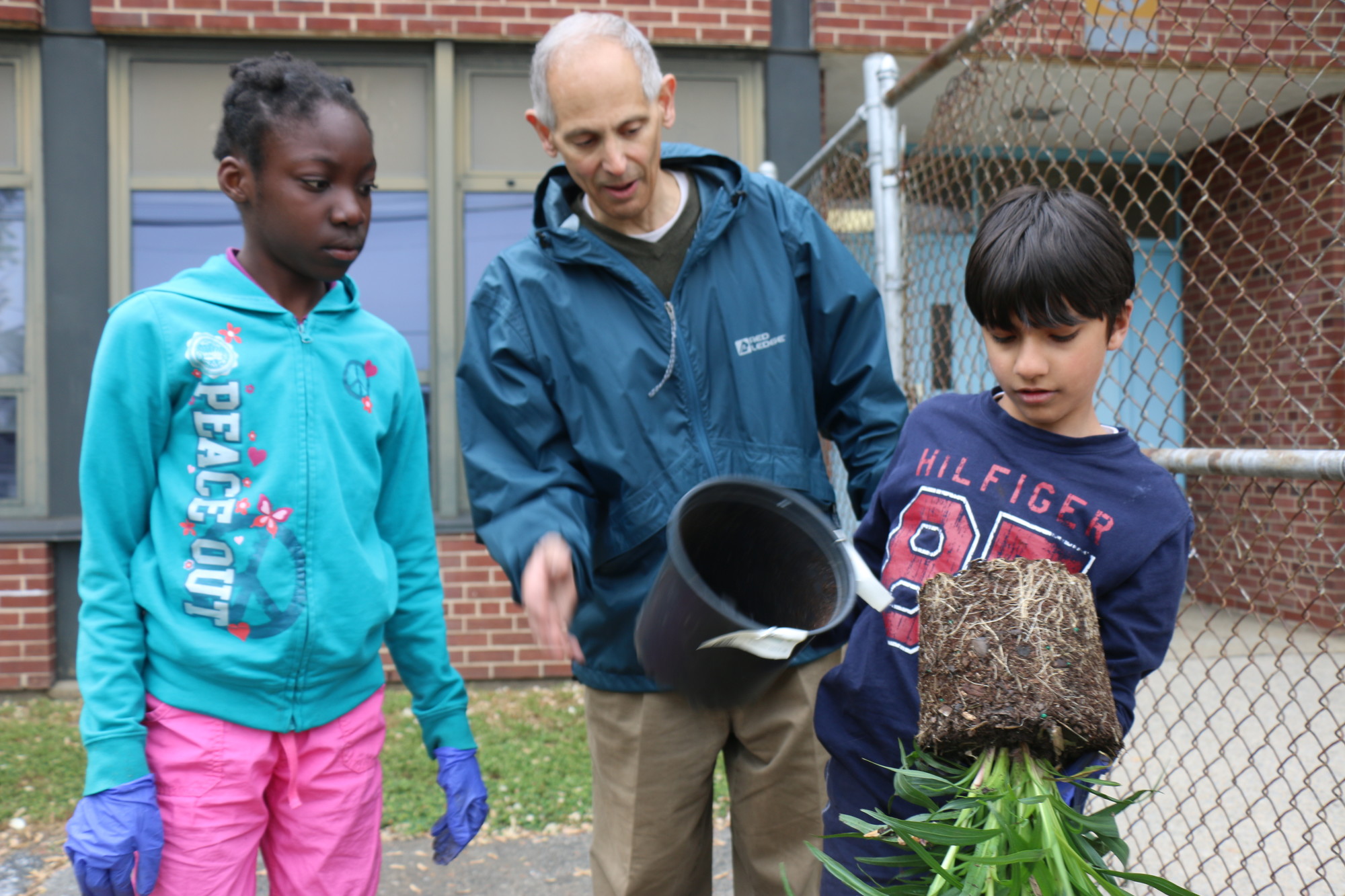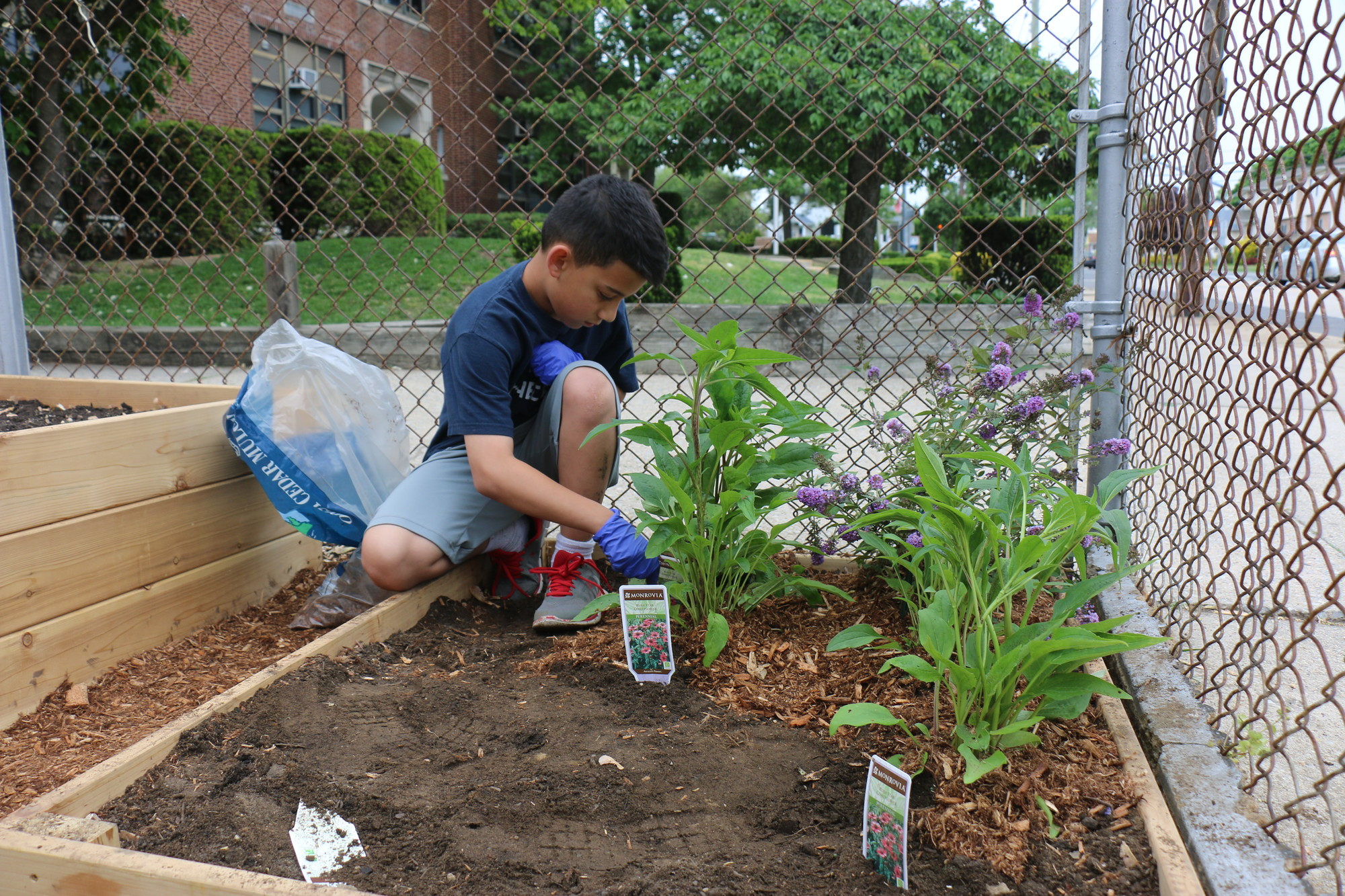Teaching through nature at Wheeler
Warren Pershad tipped a young plant upside down and delicately removed it from its plastic pot.
“We’re growing milkweed ’cause we’re trying to make a butterfly garden,” he said, explaining that endangered monarch butterflies prefer to lay their eggs on the underside of the plant’s leaves.
The plant and the garden are the start of an initiative by Wheeler Avenue School teacher Guy Jacob, who wants to create an outdoor educational space at the school.
“My vision is to create an outdoor classroom,” Jacob said. He made a presentation to the District 13 Board of Education on May 26 to advocate for the idea. His vision includes lessons in biology, art, math, poetry — every subject stands to benefit from the natural inspiration the space could provide, Jacob said.
He oversaw a group of four students on May 21 who planted several species of plants native to Long Island. Jacob bought the specialized flora from the Long Island Native Plant Initiative, in Hampton Bays. The three species of milkweed he obtained are rarely found in the average garden center, he said, and the project takes on a special educational value when his students learn about the significance of planting something that serves a threatened species of wildlife.
That significance wasn’t lost on Gabby Dorcely, 10. “I feel like we’re saving the animal that’s gonna die out,” she said.
The population of monarch butterflies has declined in the U.S. in the last 25 years by about 970 million, according to the U.S. Fish and Wildlife Service. Environmental groups have proposed planting milkweed in abundance to counter the eradication of the plant by farmers and homeowners, whom experts blame for the butterfly’s decline.
Jacob said that the project has great implications for the connection between students and their school, building a sense of community and investment in something that they can see when they pass it years later. But such a hands-on project has larger implications, too.
“It’s to help them to develop an environmental consciousness, and an awareness of endangered species,” he said.
Student John Youssef, 10, pointed out that his class used math during the planning phase. “As you can see, there’s three raised beds,” he explained, “so in the classroom, we took measurements of each raised bed to figure out how much soil we would need Mr. Jacob to get to fill them up.”
The butterfly garden was funded by two grants totaling $550, one from the NEFCU credit union and one from the Interschool Council of PTA’s. Jacob plans to apply for a $5,000 educational grant from Lowe’s Home Improvement to expand the scope of the project. He said he hopes to include evergreens to create a natural ambiance along the fence that separates the yard from the road, and tables where students can sit and read, write or work on art projects.
“I want to maximize utilization,” he said of the area, which is partially shaded by trees. Ultimately, he said, the degree to which his initiative succeeds will depend on funding, and how many parents, faculty and interested community members get involved. Jacob said he is starting a committee to advance the project.
If successful, the garden will be a place that offers students an experience they can’t get inside a classroom, and Jacob hopes the rest of the school’s students will eventually share the excitement he has seen in his class’s planting volunteers. “What I’m trying to do is get as many kids as I can to come out with me,” he said. “There’s a lot of research about being in a natural setting and how it helps education.”









